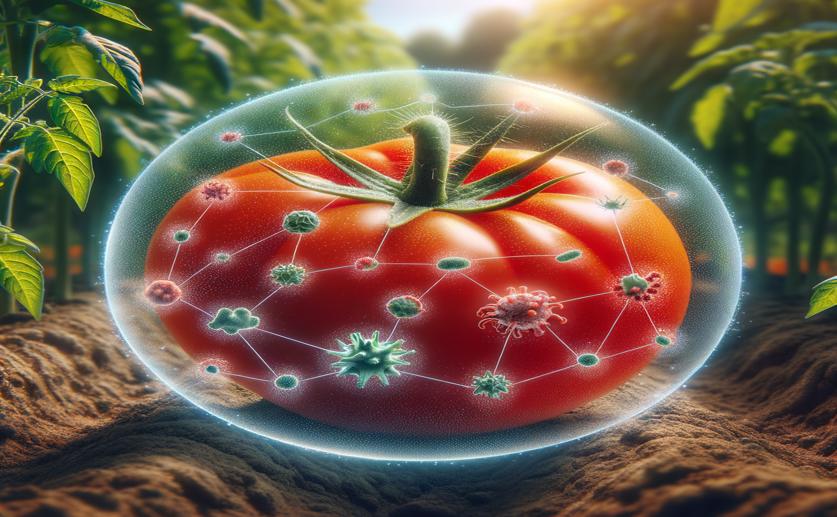
Tomato Defense Protein Interacts with Pathogen to Boost Plant Immunity
Greg Howard
13th August, 2024

Image Source: Natural Science News, 2024
Key Findings
- Researchers at National Taiwan University found that the effector protein RipBJ from the bacterium Ralstonia solanacearum interacts with plant RBOHs
- RipBJ expression in plants led to cell death and increased hydrogen peroxide (H2O2), enhancing plant defense against the bacterium
- The interaction between RipBJ and the tomato RBOH SlWfi1 is crucial for activating plant defense mechanisms
References
Main Study
1) Tomato NADPH oxidase SlWfi1 interacts with the effector protein RipBJ of Ralstonia solanacearum to mediate host defence.
Published 12th August, 2024
https://doi.org/10.1111/pce.15086
Related Studies
2) A molecular roadmap to the plant immune system.
3) Getting across--bacterial type III effector proteins on their way to the plant cell.
Journal: The EMBO journal, Issue: Vol 21, Issue 20, Oct 2002
4) Behind the lines-actions of bacterial type III effector proteins in plant cells.
5) Co-Immunoprecipitation of Membrane-Bound Receptors.



 11th August, 2024 | Jenn Hoskins
11th August, 2024 | Jenn Hoskins